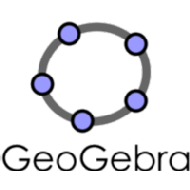Have you ever felt like there should just be a way to work with geometry and algebra, but on a computer? Well there is a great one, so let me introduce you to:


GeoGebra is a super useful online tool for drawing those pesky shapes that just won't come out right on paper. I have used it to analyze triangles; to construct parallel lines cut by a transversal, and to analyze the relationship of the resulting angles; to examine the interior and exterior angles of a polygon; and to construct repeating congruent polygons. But there are so many other uses! Not only can you construct your own geometric figures, you can also access Geogebratube to utilize other people's creations.
Check out the following:
Tangram Puzzle Cat (Geometry for the Elementary Set)
Circumference of a Circle (Geometry for Middle School)
The Unit Circle (High School Concepts)
There are so many uses for Geogebra: things I haven't even imagined yet! What a wonderful, FREE tool to have at our fingertips. I plan on using lots of Geogebra in my future career as an educator!
Check out Spirograph, just for fun!

